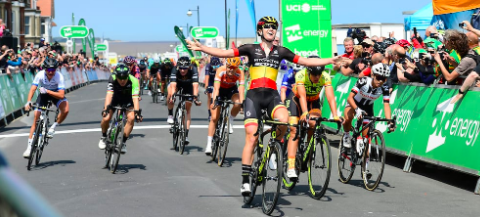Whether you’re training for a professional race or a charitable challenge like ours - consistent cycling is key! Clocking up those miles each week should always be your main focus. Gradually-increasing, low-intensity riding in the months leading up to the event will help strengthen those leg muscles and build up stamina over time.
Around 2-3 weeks prior to the challenge, pick a weekend to complete a 50-mile ride on the Saturday, followed by at least 25 miles on the Sunday. If possible, emulate the conditions of the actual event (i.e. incorporate some variance in the topography). Then, it’ll be a case of easing off the pedals and winding down your distance and intensity while increasing your carb intake ahead of the main event.
* * * * * * * * * * * * * * * * * * * * * * * * * * * * * * * * * * * * * * * * * * * * * * * * * * *
Obviously, there’s no one unique way to train for a multi-day cycle event, so by all means conduct your own independent research, and see what works best for you. The main idea is to steadily develop your cycling endurance with incremental weekly increases in riding distance (in much the same way that runners train for a marathon).
We would endorse something similar to the following 4-month training programme as being appropriate for our three-day London to Paris cycle event:
16 weeks: Develop a solid endurance base. Speed is not important here. Concentrate on sustaining a steady rhythm. Get out on 2-3 cycles each week.
14 weeks: Think about distance a little more now. Ideally at this stage you want to be cycling around 4-5 hours per week, equating to roughly 50-75 miles.
12 weeks: Now you're cycling a little more comfortably over longer distances, try doing one longer ride (perhaps over 25-30 miles on a single day). Keep your heart rate at around 60% of your maximum.
10 weeks: Start to vary your routes to add inclines/declines to your training. Flexibility training off the bike can help those core muscles strengthen, as can planking and anaerobic exercise at the gym.
8 weeks: Try a three-day streak, where you ride back-to-back on consecutive days. These don't have to be particularly long rides, but perhaps around 20-25 miles each day. Make the final day slightly shorter.
6 weeks: Master the art of recovery. Snack on carbs and protein within 30 minutes of each ride. Be sure to get plenty of rest days, and throw in some stretching/foam rolling to soothe any muscular aches.
4 weeks: With your weekly cycling distance getting progressively further, reduce the amount of any additional exercise involving running, so that you're now exclusively targeting those muscles required for cycling.
2 weeks: Take a weekend where you complete that ‘long ride’ on back-to-back days (we suggest 50 miles on the first day, followed by at least 25 miles on the second). This would be a good time to get your bike checked over thoroughly by a mechanic!
1 week: This is the tapering period, where you just complete a couple of shorter rides, instead shifting your focus on repairing those muscles and refilling your glycogen reserves through carbohydrates and - to a lesser extent - protein.
* * * * * * * * * * * * * * * * * * * * * * * * * * * * * * * * * * * * * * * * * * * * * * * * * * * *
If you’ve literally just signed up and are yet to even purchase a bike, make sure you buy one suitable for our challenge: Hybrids and road bikes are fine, just don’t turn up with a mountain bike! Fit your bike with at least one water bottle holder, a set of lights (front and rear), reflectors and a small bell. Purchase a safe helmet, a sturdy lock, and perhaps even a set of pedal straps. A waterproof handlebar mount is recommended for your smartphone to help with navigation, and finally don’t forget that all-important puncture repair kit (including pump and spare inner).
Once acquainted with your bike, take some time to learn how she works. Discover which handlebar/saddle position suits your height and which gear(s) you feel comfortable riding in. Leaning forward helps distribute the weight evenly between front and rear wheels, but you do also want to remain visible to other road users, so it’s important you get your cycling position right.
As you get stuck into your regular cycling pattern, you’ll notice how much your body starts to crave carbohydrates. It needs them! Be sure to allow yourself a good balance of carbohydrates and proteins, to repair your muscles, and don’t be afraid to indulge in a few treats now that you’re burning all those extra calories. Whilst riding, take regular sips of water to counterbalance that which you’ll lose through perspiration, and try to limit caffeine and alcohol as your training programme comes to its climax.
Otherwise, it’s just a case of managing your effort sensibly, with endurance - rather than speed - in mind. Take regular rest days to ensure your legs have time to recover, and try to remember to stretch after those longer rides. Foam rollers are fantastic at soothing any aching muscles.
Remember - people of all ages and abilities have completed the London to Paris cycle challenge. Sure, it’s tough, but all it takes is a bit of preparation, so don’t worry. You got this!
